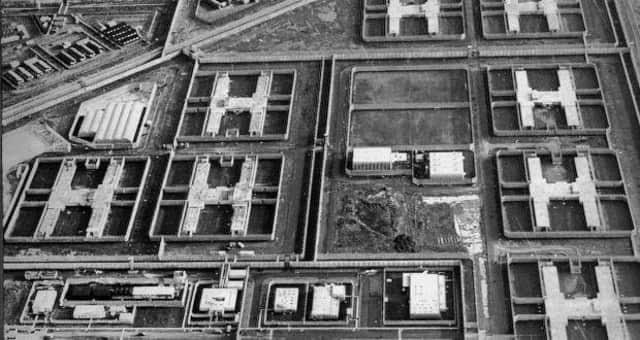William Matchett: The IRA terrorist dead get better legacy justice than their victims


Hamas at Be’eri kibbutz on October 07 comes to mind. Defenceless prisoners shot dead at close range in cold blood. Murder, and worse. Or so you’d think.
Richard Muldoon, Barry Foster, Thomas Penrose were off-duty soldiers on a night out in Belfast in March 1973. A fourth miraculously survived gunshot wounds to the head.
Advertisement
Hide AdAdvertisement
Hide AdAn extradition court agreed with the Provisional IRA perpetrators, ruling political offence. War crime was defined as non-crime, which stunned the investigator. It was plainly wrong.
Yet, okay in a stealthy amnesty hidden in confusing legal text. In 1990, a terror suspect caught with an assault rifle in Northern Ireland skipped bail. Instead of extradited from the Republic, he was given a teaching job.
The lunacy spanned three decades. Hundreds suffered it.
Provo republicanism is hate ideology wherein killing ‘Brits’ is praised.
The local Royal Ulster Constabulary and Ulster Defence Regiment, especially Catholics in the ranks, were particularly reviled as they symbolised the unionist community of mostly but not exclusively Protestants. Everyone who did not discriminate on murder – that is, no exemptions, no alternative definitions, murder is murder – and steadfastly supported the lawful authorities was defined a Brit complicit in grand conspiracy against republicans.
Advertisement
Hide AdAdvertisement
Hide AdEurope’s top human rights court found both extremes engaged in “sectarian murders” and the “public emergency threatening the life of the nation” properly started in 1970 with PIRA, which was “far more of a deadlier menace” than “loyalist terrorists” and responsible for the vast bulk of murders, attempted murders and bombings.
PIRA the aggressor, rubbishes it being the defender or having no alternative. Exposing the ingredients of PIRA’s chief smear – collusion – that would dominate legacy, Strasbourg listed prosecution data in lauding the security response led by civil police for its impartiality. It noted “18 soldiers” prosecuted for terrorist-type crimes and loyalists “frequently brought before the courts” and “they do not seem to have been able to act with impunity.”
Further, PIRA controlled areas hostile to security forces making it harder to prosecute republicans than loyalists. Strasbourg spotlighted July 1972: 95 fatalities, 200 explosions, 2,800 shootings.
This is more terrorist incidents in a month, and just under the death total, than the Republic for the entire emergency of some 30-years.
Advertisement
Hide AdAdvertisement
Hide AdThese facts are in Ireland v UK (1978) best known for the brief ‘torture’ debacle at the start of internment (1971-75). The UK admitted the interrogation techniques were wrong and stopped them. Other than political reasons of placating the green fringe, taking the UK to court left many bemused why Ireland proceeded. It was sure to inflame loyalists and marginalise liberal unionists. Widely overlooked in the interstate case is a second complaint by Ireland. It accused the UK of discriminating against Catholics during internment.
The complaint was roundly rejected.
A 100% record up to 1984 in refusing extraditions encouraged prison breaks. Seasoned serial killers with nicknames like ‘The Fisherman’ broke out of jail and fled south, boosting attacks on border Protestants. There was nothing similar for loyalists. They had nowhere to run. No UK court differentiated on murder, accounting for a higher homicide clearance rate against loyalists.
PIRA had the largest pool of unsolved murders, and in legacy it stayed that way, essentially. And homicidal maniacs, many with RoI postcodes, lawfully killed in trying to add to the tally, got superior justice to their victims (Article 2 compliant inquests for infamous serial killers, many of them prison escapees, is a far higher standard of justice than their victims). For some 1,700 lost to republican terror, Sinn Fein, the party that absorbed PIRA in the 1998 Belfast/Good Friday Agreement, persists with the non-crime insult.
Like Javert in Les Misérables, Ireland politically obsesses with Jean Valjean Brits. This time, animated by amnesties, victims and human rights it is taking the UK to Strasbourg over a revised legacy regime based on a law given Royal assent on September 18, 2023, having been extensively debated in Parliament.
Advertisement
Hide AdAdvertisement
Hide AdBut what of those topics assigned to the Muldoon, Foster, Penrose families? Or do they not count? Amnesties exclusive to terrorists flowed out of the Agreement like a burst damn. But when parity was sought for the security forces, outrage. How impartial and sincere has Ireland been vis-à-vis the threat to its neighbour’s existence?
To discriminate on murder makes some lives worth less than others. This is inequality. Change is long overdue. Criminal prosecutions are highly improbable. However, fact-based truth, largely missing to date, is featured in Legacy II. Unrepentant ex-terrorists are sociopaths indulged by political prisoner false tongue. They muddy any setting and need treated accordingly. Legacy II is for innocent souls so far overlooked to explain to them who did what and why.
The detective, now in his 80s is still chastened by the experience. He had no interest if murder was motivated by greed, love or politics. His job was to get evidence, which he did, to nick villains irrespective of who and deliver justice for families, which Ireland frustrated.
William Matchett, author of, Secret Victory: The intelligence war that beat the IRA